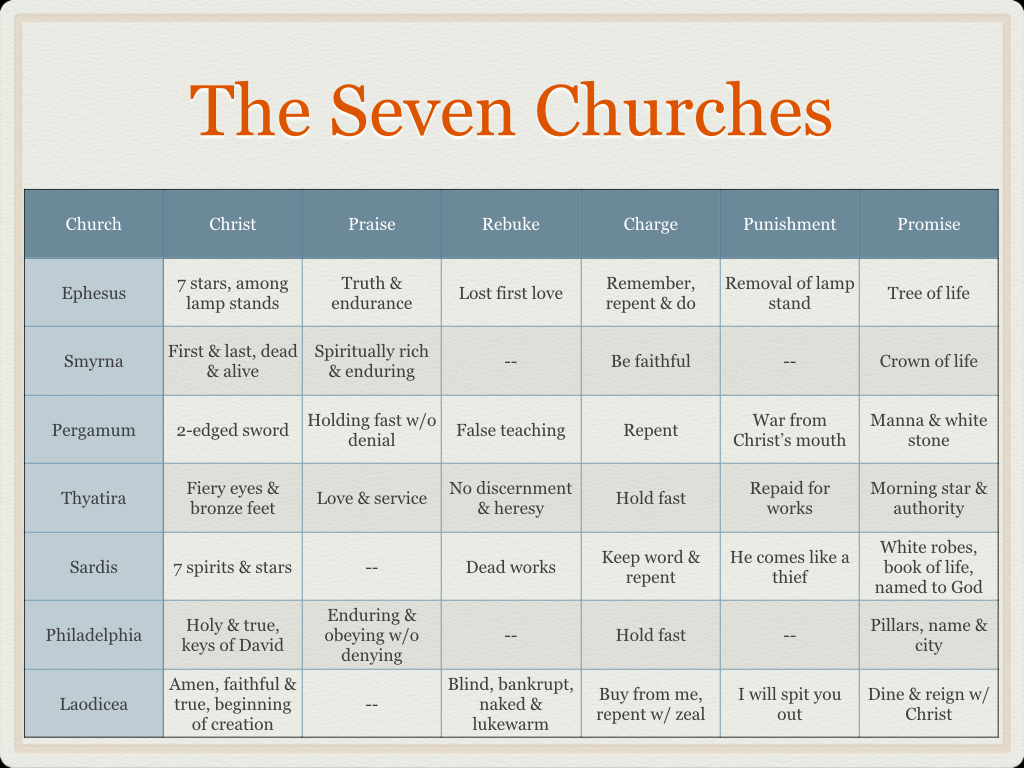
The first of six murals in the 1960s St Benet’s Chaplaincy, Queen Mary’s, University of London. Painted by Adam Kossowski. Courtesy of the Art + Christianity Enquiry (ACE) Trust.
The first three chapters of Revelation are probably the most familiar to Christians today. The text is fairly straightforward (especially compared to the rest of the book) and is therefore easily adapted as an introduction to church history, or for an examination of the state of the church today. But while both uses are reasonable applications of Scripture, the text performed a much more personal and immediate function for the first-century churches of Asia.
For John and other Asian believers, persecution was not just a possibility; it was a reality they lived with every day. The apostle calls himself their “brother and partner in the tribulation and the kingdom and the patient endurance that are in Jesus,” writing to them not from the comforts of his own home, but from his exile on “the island called Patmos on account of the word of God and the testimony of Jesus” (1:9 ESV). John knows firsthand that the churches are suffering, and that things will get even worse before they get better.
And yet the people of God would not face these travails alone. A “loud voice like a trumpet” speaks to John (v. 11). But it is unlike any voice uttered by the lips of man. It is not just heard, but felt—“like the roar of many waters” (v. 15), the breaking of the surge against the cliffs, the rumble of the falls as the water pours down its streams. It is a voice made visible, which John turns to see (v. 12), a sound that takes on form, and a familiar one at that: the Word that became flesh and dwelt among us (John 1:1, 14). In this time of great suffering—of isolation from his loved ones, of alienation from his neighbors—John sees Jesus.
But it is Jesus as most had never before seen him. It is not the babe in swaddling cloths, or the carpenter’s son, or the eccentric healer, or the crucified prophet. It is the glorified Son of God and Man (Rev 1:13). As Vincent once wrote, “Had He come into the world emphasizing His equality with God, the world would have been amazed, but not saved” (commenting on Php 2:5). But amazed the world would now be. The great High Priest showed himself, armed for battle and capable of killing with even a whisper or a glance.
And though John had seen this Jesus before, there was only one possible response: “When I saw him, I fell at his feet as though dead” (Rev 1:17). But as he had done with both Daniel and the Twelve, the transfigured Son of Man speaks words of comfort and assurance (vv. 17-20; see Dan 7:7-14; Mat 17:1-9): “Stop fearing. I was dead. I am alive forever. More than that, I hold in my hand the keys to death and the grave. You should not fear to go any place to which I hold the key. You may be persecuted to death but I am still your king” (Summers 105; Mat 28:20; Rom 8:35-39).
Christ then tells his disciple that the visions he is about to see relate both “things that are and things that are to take place after this” (Rev 1:19). Jesus will therefore reveal to John what is happening now in the churches on the mainland (chs. 2-3) and in heaven (chs. 4-5), before showing him the course of events that will lead to the Lamb’s judgment (chs. 6-22). So while the message was written first to them, it remains equally relevant to us as well. As Summers writes, “The message is one of universal application. Wherever the conditions [present then] exist [today], the corrective procedure indicated will find application” (108).
So when we can see with our minds the temples and theaters of Ephesus and Pergamum (Acts 19:24, 29; Rev 2:13). When we can hear the guilds carousing in honor of their divine patrons (2:20). When we can travel through time and see the sentries at Sardis asleep at their posts, when first Cyrus then Antiochus struck (3:2-3). And when we can taste the lukewarm mineral water piped into Laodicea, or dress in the city’s black wool, or coat our eyes with its collyrium (3:15-18). Then we will begin to grasp the words of the Spirit of Christ to these churches (2:7, 11, 17, 29; 3:6, 13, 22; Rom 8:9; Php 1:19).
But with the exception of the churches at Smyrna and Philadelphia, the message is not always positive. When the Christ returns both within history and at its end, he comes to both save and judge. And as Peter had written over thirty years before, this judgment begins within: “For it is time for judgment to begin at the household of God; and if it begins with us, what will be the outcome for those who do not obey the gospel of God? And ‘If the righteous is scarcely saved, what will become of the ungodly and the sinner?’ Therefore let those who suffer according to God’s will entrust their souls to a faithful Creator while doing good” (1Pe 4:17-19).
The message to the church both then and now is therefore clear: “Be faithful unto death, and I will give you the crown of life” (Rev 2:10). As Leo Trese reminds us, “All the just who live during this time have a first resurrection by Baptism and reign with Christ so long as they are in the state of grace; and they have [either] a second resurrection at the end of the world . . . [or a] second death in hell” (quoted in Oden 3.10.7). Therefore, “Let every person who does not wish to be condemned by . . . the second death hasten here to become a participant of the first resurrection” (Fulgentius of Ruspe, On the Forgiveness of Sins 2.12.3-4, ACCS; see Rom 6:3-7).
And as John writes, “He who has an ear, let him hear what the Spirit says to the churches.” Amen and Amen.
The following files are now available for free viewing and download:
Attachments
- 02 Slides: The Seven Churches (Rev 1:9-3:22)
Audio Recordings
- Week 8: The Seven Churches, Part 1 (1:9-11)
- Week 9: The Seven Churches, Part 2 (1:12-20)
- Week 10: The Seven Churches, Part 3 (1:12-2:4)
- Week 11: The Seven Churches, Part 4 (2:5-11)
- Week 12: The Seven Churches, Part 5 (2:12-29)
- Week 13: The Seven Churches, Part 6 (3:1-22)
- Week 14: The Seven Churches & Seals (1:9-4:6a)
Works Cited
- Ancient Christian Commentary on Scripture. Ed. Thomas C. Oden. InterVarsity, 2003. Accordance.
- The ESV Study Bible. Ed. Lane T. Dennis & Wayne Grudem. Crossway, 2008. Accordance.
- Oden, Thomas C. Classic Christianity. HarperCollins, 2009. iBooks.
- Summers, Ray. Worthy is the Lamb: An Interpretation of Revelation. Nashville: Broadman, 1951. Print.
- Vincent, Marvin R. Word Studies in the New Testament. New York: Union Theological Seminary, 1887. Accordance.
Cross-posted from In His Image.





